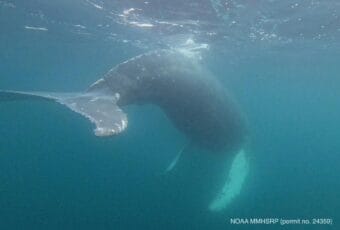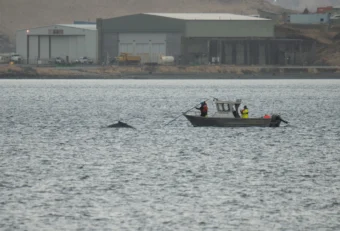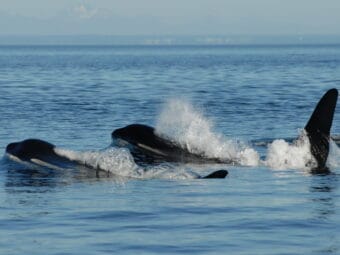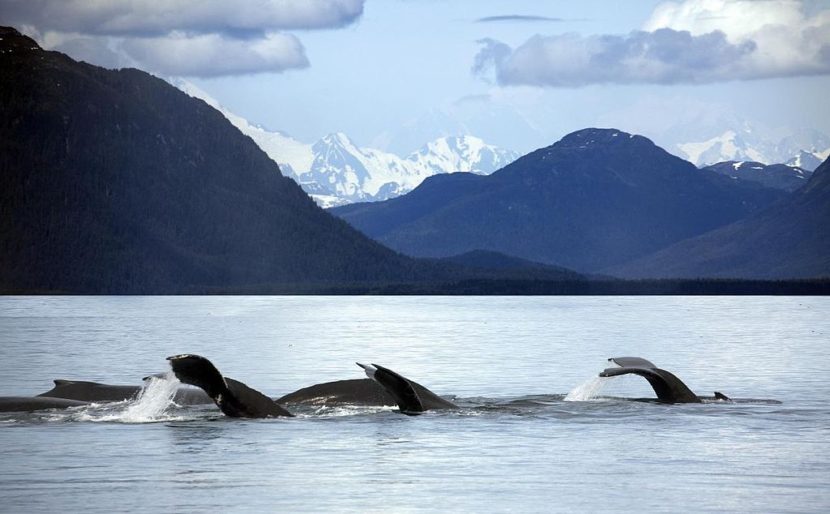
Humpback whales were hit hard by “the blob”—a warm water event that killed off all kinds of sea life in the North Pacific. Researchers at Glacier Bay National Park and Preserve say the humpback population is rebounding.
The reflection of Mt.Wright ripples on the glassy water of Glacier Bay National Park and Preserve until a humpback breaks the surface for a huge mouthful of fish.
Chris Gabriele is a biologist with the park service. She has been observing whales here for over 30 years, but the sight of one of the mammals up so close still wows her. She snaps a few photos and checks them.
“So, that’s identifiable enough for us to tell what individual that is,” she said, looking at the image.
Whales are recognizable by their unique dorsal fins and flukes.
The photos and a log of the whale’s coordinates are the two newest entries in a data set that stretches back to 1973 — it may be the longest-running humpback study in the world. Some whales have returned here for more than 40 years. Some are older than Gabriele.
It’s long-term observational data like this that makes it possible to correlate changes in the ocean with their effects on the species that live there. Researchers could track the severity of a recent marine heat wave because the whale population sank by more than 70%, then stayed low. Lately, there’s a glimmer of hope in the data. The humpback whale population is growing.
“It’s been really encouraging last year, and this year to start to see the number of calves we’ve been seeing after the marine heat wave. And so, it really gives me hope that when the conditions are good, they’re really very resilient,” Gabriele said.
Remember “the blob?” From 2014 to 2016, consistent, record-high ocean temperatures in the northern Pacific decimated the humpback population that visits the preserve. The year before the blob, Gabriele counted an all-time high of more than 160 whales. The next year, only a quarter of them came back.
That two-year heat wave had a three-year hangover: the humpback population stayed low until 2020. This study reveals how deeply the marine ecosystem was affected.
“The whales were kind of a sentinel, that showed us what happened. Otherwise, we would not really have known. And I think it’s important to keep doing this work because we can come back in five years, 10 years, 20 years, and look at what the whales are telling us,” Gabriele said.
The numbers aren’t quite up to where they used to be, but Gabriele expects the population to stay healthy — as long as ocean conditions stay stable.
No guarantees
“It wouldn’t be surprising if there’s another blob event in the next 10 or 20 years,” said John Walsh, the Chief Scientist at the International Arctic Research Center at the University of Alaska Fairbanks.
He’s anticipating another oceanic heat wave because his lab has attributed events like “the blob” to human-caused climate change. He studies the blob through the lens of Arctic sea ice. And he found that, like whales, ice recovered somewhat a few years after the warming.
“We’ll have these modest recoveries after the big events. And then there’ll be another big extreme, somewhere down the road,” he said.
In other words, each time the ecosystem takes a hit, it bounces back. But each time a little less. He says we can count on that for the next few decades.
“The system has inertia in it. It’s like a freight train. You can put on the brakes, but it’s not going to stop on a dime, it might stop at half a mile,” Walsh said. “So I think we basically have to be ready for more of the consequences of what we’ve already done.”
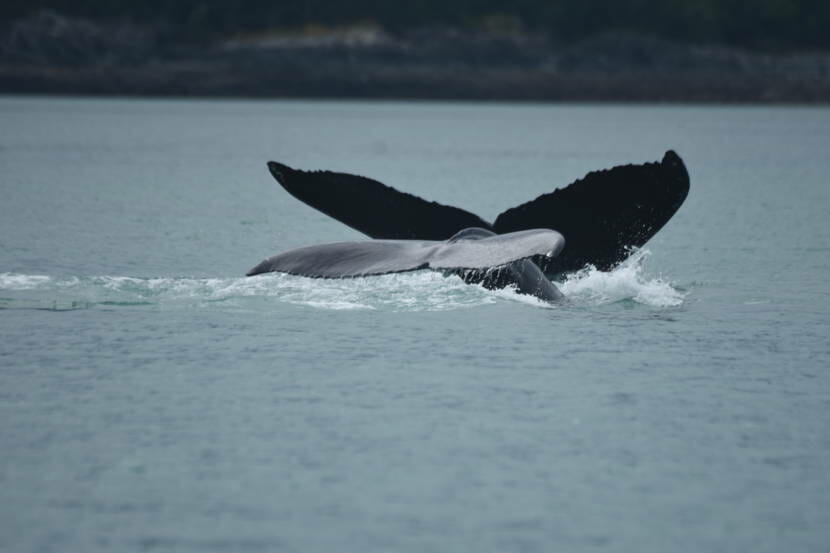
Signs of hope
Back on the preserve, a cow-calf pair comes up to breathe together. Their backs are slick, dark arches on the water.
There are eleven calves this year. During the heat wave, there were years without any calves at all.
The pair is a sign of the ecosystem righting itself, for now. Gabriele puts the boat in gear as she jots down the time of their breath; she knows she has 3-5 minutes until the whales surface again.
Correction: A previous version of this article contained a misspelling of Chris Gabriele’s name.

